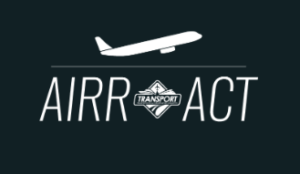 As Congress dukes it out over the 2016 FAA Reathorization Act (AIRR Act) the industry is weighing in on the provisions that would affect commercial drones. Reactions are mixed, as industry groups applaud the small steps forward and bemoan the absence of some critical legislation to support innovation in the industry.
As Congress dukes it out over the 2016 FAA Reathorization Act (AIRR Act) the industry is weighing in on the provisions that would affect commercial drones. Reactions are mixed, as industry groups applaud the small steps forward and bemoan the absence of some critical legislation to support innovation in the industry.
What the Drone Industry Wanted
Prior to the release of the AIRR Act text last week, the Association for Unmanned Vehicle Systems International (AUVSI) outlined the priorities that the group hoped to see in the Act’s proposed drone regulations. The statement introduced their 6 specific priorities outlined by asking first and foremost for some regulatory action:
“Since the next several years will be critical to the advancement of UAS, Congress needs to give the FAA the authority and ability to create risk-based regulations for the United States to realize the full potential of UAS technology and its economic benefits,” said Brian Wynne, president and CEO of AUVSI. “While the FAA Modernization and Reform Act of 2012 outlined a timeline for UAS integration, the FAA has been plagued by delays and has achieved only some of the milestones. AUVSI and its members urge the FAA to use all available means to establish a regulatory framework immediately and without any further delays.”
The 6 priorities that AUSVI outlined were:
- Implement a “Risk-Based, Technology Neutral” Regulatory Framework
- Expand Section 333 Exemption Authority to Include Beyond-Line-of-Sight
- Develop a Holistic R&D Plan for UAS Integration
- Make FAA-Designated UAS Test Sites Eligible for Federal Funding
- Advance the Development of a UAS Traffic Management System
- Elevate UAS Integration into the National Airspace as a National Priority
The “Beyond-Line-of-Sight” provision is something that Amazon and other large commercial retailers have spent millions of dollars lobbying for, as this would allow for drone delivery and other commercial applications.
What the Industry Got
As soon as the text was released, AUVSI issued another statement, applauding the bill:
While we are still reviewing the specifics of the FAA reauthorization bill, we want to thank Chairmen Shuster and LoBiondo for recognizing the importance of commercial UAS operations and the need to move toward full integration into the national airspace.
Presumably the organization felt that action of some sort was better than none: and some of the requested priorities were mentioned. The AIRR act includes a risk-based permitting process, which would eliminate case-by-case certification for commercial operators; it calls for development of a UAS traffic management system; and for greater use of the test sites.
What the AIRR Act Leaves Out
There are some notable exclusions. Without the provision for ex-line of sight flight, many commercial applications are prohibited: drone delivery, large scale agricultural monitoring, and many others are simply impossible within the restriction as it stands. And while the AIRR Act does take the FAA to task for not completing the UAV Integration plan, it does not make integration a major national priority. The Act pays the same lip service that many similar documents do to industry potential: but emphasizes issues of safety and privacy over innovation.
The Small UAV Coalition. representing industry players including Airmap, Amazon Prime Air, DJI, DroneDeploy, Google [X], GoPro, Intel, Kespry, Parrot, PrecisionHawk, Verizon Ventures, and 3D Robotics, also published a statement in reaction to the contents of the Act.
While voicing muted approval of the Act’s inclusion of risk-based permitting, the Coalition says that it does not go far enough: “The Coalition supports a broad risk-based approach to UAS policies and regulations so that the United States can begin to fully and safely realize the economic and consumer benefits of highly automated UAS, operating both within and beyond the visual line of sight. Without such a framework in place, the United States risks falling further behind global competitors who are increasingly embracing the benefits of UAS.”
In addition to urging Congress to push a UAV Traffic Management System along, the Coalition asks the Committee to consider a new class of commercial drones below 55 pounds with a streamlined certification process, and a classification for commercial drones weighing under 4.4 pounds, so-called “micro UAS.” Creating a micro UAS classification would open the door to many commercial applications requiring only a camera and a processor: and DJI, the world’s largest manufacturer of micro UAS, is in full support.
It’s a step in the right direction,” Politico reports that DJI VP Brendan Schulman commented on the Act, “but not a hole in one for the drone industry: [We] feel the creation of a simple and safe micro drone category … is the best way to stimulate innovative commercial operations.”
While the AIRR Act does provide the FAA with a push to get full integration of drones into the National Airspace done, it may not be strong enough to provide the industry with much needed government support. As the FAA and Congress argue over the privatization of the Air Traffic Control division, the drone industry could be pushed aside for another year.

Miriam McNabb is the Editor-in-Chief of DRONELIFE and CEO of JobForDrones, a professional drone services marketplace, and a fascinated observer of the emerging drone industry and the regulatory environment for drones. Miriam has penned over 3,000 articles focused on the commercial drone space and is an international speaker and recognized figure in the industry. Miriam has a degree from the University of Chicago and over 20 years of experience in high tech sales and marketing for new technologies.
For drone industry consulting or writing, Email Miriam.
TWITTER:@spaldingbarker
Subscribe to DroneLife here.







[…] then, some things have changed. The 2016 and then again, the slight-changes-pencilled-into-the-margins-2017 House version, known as the AIRR […]